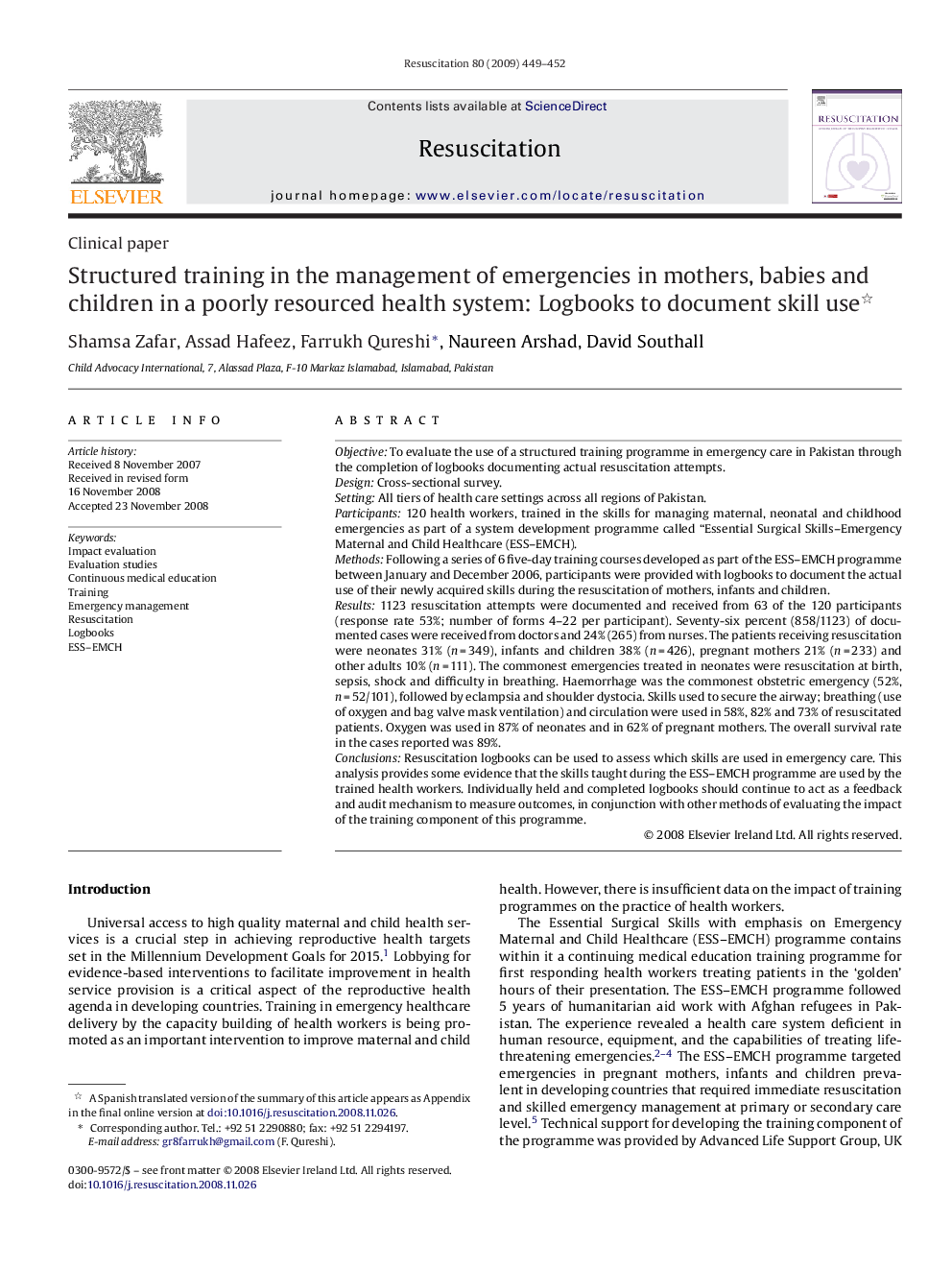| کد مقاله | کد نشریه | سال انتشار | مقاله انگلیسی | نسخه تمام متن |
|---|---|---|---|---|
| 3011223 | 1181560 | 2009 | 4 صفحه PDF | دانلود رایگان |

ObjectiveTo evaluate the use of a structured training programme in emergency care in Pakistan through the completion of logbooks documenting actual resuscitation attempts.DesignCross-sectional survey.SettingAll tiers of health care settings across all regions of Pakistan.Participants120 health workers, trained in the skills for managing maternal, neonatal and childhood emergencies as part of a system development programme called “Essential Surgical Skills–Emergency Maternal and Child Healthcare (ESS–EMCH).MethodsFollowing a series of 6 five-day training courses developed as part of the ESS–EMCH programme between January and December 2006, participants were provided with logbooks to document the actual use of their newly acquired skills during the resuscitation of mothers, infants and children.Results1123 resuscitation attempts were documented and received from 63 of the 120 participants (response rate 53%; number of forms 4–22 per participant). Seventy-six percent (858/1123) of documented cases were received from doctors and 24% (265) from nurses. The patients receiving resuscitation were neonates 31% (n = 349), infants and children 38% (n = 426), pregnant mothers 21% (n = 233) and other adults 10% (n = 111). The commonest emergencies treated in neonates were resuscitation at birth, sepsis, shock and difficulty in breathing. Haemorrhage was the commonest obstetric emergency (52%, n = 52/101), followed by eclampsia and shoulder dystocia. Skills used to secure the airway; breathing (use of oxygen and bag valve mask ventilation) and circulation were used in 58%, 82% and 73% of resuscitated patients. Oxygen was used in 87% of neonates and in 62% of pregnant mothers. The overall survival rate in the cases reported was 89%.ConclusionsResuscitation logbooks can be used to assess which skills are used in emergency care. This analysis provides some evidence that the skills taught during the ESS–EMCH programme are used by the trained health workers. Individually held and completed logbooks should continue to act as a feedback and audit mechanism to measure outcomes, in conjunction with other methods of evaluating the impact of the training component of this programme.
Journal: Resuscitation - Volume 80, Issue 4, April 2009, Pages 449–452